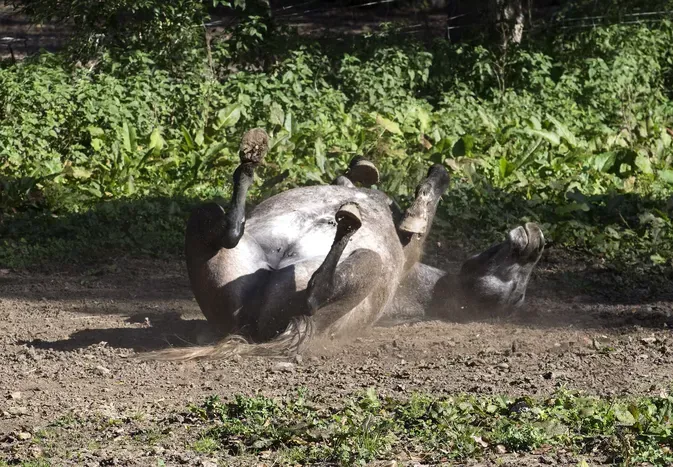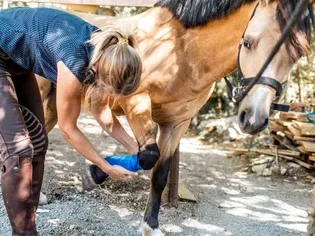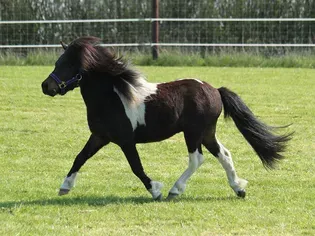Equine Protozoal Myeloencephalitis (EPM) in Horses
Updated on 05/26/24

Equine Protozoal Myeloencephalitis (EPM): A Comprehensive Guide for Horse Owners
Equine protozoal myeloencephalitis (EPM) is a neurological disease caused by a protozoal parasite that affects the central nervous system of horses. The parasite, Sarcocystis neurona, is transmitted through the ingestion of opossum feces. Once ingested, the parasite migrates to the horse's brain and spinal cord, where it can cause inflammation and damage to the nervous tissue.
EPM can cause a wide range of clinical signs, depending on the location and severity of the lesions in the nervous system. Common signs include:
* Ataxia (incoordination)
* Weakness
* Muscle atrophy
* Abnormal gait
* Head tilt
* Difficulty swallowing
* Seizures
* Behavioral changes
EPM is a serious disease that can have a significant impact on a horse's health and well-being. Early diagnosis and treatment are essential to improve the chances of a full recovery.
Diagnosis
The diagnosis of EPM can be challenging, as the clinical signs can be similar to those of other neurological diseases. A thorough history and physical examination are essential, and your veterinarian may recommend additional tests such as:
* Blood test to detect antibodies to the S. neurona parasite
* Magnetic resonance imaging (MRI) or computed tomography (CT) scan to visualize lesions in the brain and spinal cord
* Cerebrospinal fluid analysis to look for evidence of inflammation
Treatment
The treatment of EPM typically involves a combination of medications, including:
* Antiprotozoal drugs to kill the parasite
* Anti-inflammatory drugs to reduce inflammation
* Muscle relaxants to improve coordination
* Physical therapy to help the horse regain strength and function
Prevention
The best way to prevent EPM is to control opossum populations around your horse's environment. This can be done by:
* Removing potential food sources for opossums, such as pet food and garbage
* Sealing up holes in your barn or other structures where opossums could nest
* Trapping and removing opossums from your property
Examples of EPM in Horses
* A 10-year-old Thoroughbred mare presented with ataxia and weakness in her hindquarters. She had a history of exposure to opossums on her pasture. A blood test confirmed the diagnosis of EPM, and she was treated with antiprotozoal and anti-inflammatory medications. With rest and physical therapy, she made a full recovery.
* A 5-year-old Quarter Horse gelding presented with a head tilt and difficulty swallowing. He had no history of exposure to opossums. An MRI scan revealed lesions in his brain and spinal cord, and a cerebrospinal fluid analysis confirmed the diagnosis of EPM. He was treated with antiprotozoal and anti-inflammatory medications, and his clinical signs gradually improved. However, he did not make a full recovery and was retired from riding.
Conclusion
EPM is a serious disease that can have a significant impact on a horse's health and well-being. Early diagnosis and treatment are essential to improve the chances of a full recovery. By understanding the causes, symptoms, and treatment options for EPM, horse owners can help protect their animals from this debilitating disease.
Explore More Pets

Pony Breeds
The Difference Between Horses and Ponies

Horse Diseases & Conditions
What Do I Do If My Horse Colics?

Pony Breeds
Horse and Pony Care by the Day, Week, Month and Year

Horse Grooming
Mange in Horses

Horse Diseases & Conditions
Grease Heel in Horses

Light Horse Breeds
Gypsy Vanner Horse Breed Profile

Horse Diseases & Conditions
Girth Galls and Saddle Sores

Pony Breeds
Shetland Pony Breed Profile
